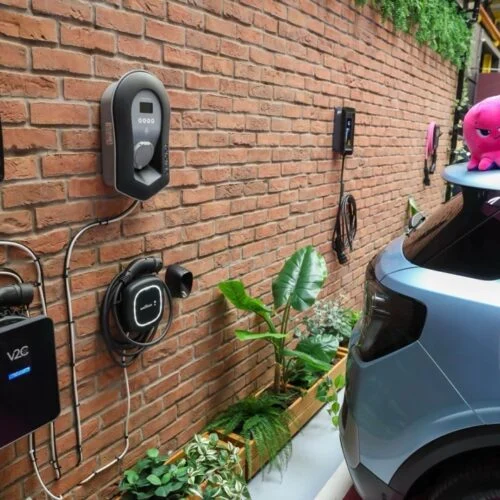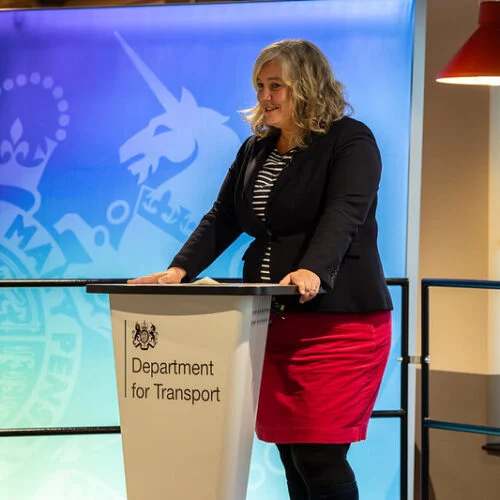When news broke that Mayor of London Sadiq Khan planned to scrap London’s Cleaner Vehicle Discount (CVD) – a scheme exempting EV drivers from London’s Ultra Low Emission Zone (ULEZ) charge– it was met with significant pushback from both the EV-driving general public and the EV sector.
The move to scrap the scheme on Christmas Day 2025 is somewhat surprising given its success in pushing Londoners towards EV uptake; when Marketcheck examined used EV sales in the months before and after the ULEZ was expanded to include all London boroughs, it found an 8% rise in used EV sales in areas newly subject to ULEZ charges. Transport for London (TfL) itself previously promoted EVs as a good option for Londoners who need to drive but don’t want to pay a £15 daily charge for driving a car anywhere in the capital.
While there are currently plans to replace the current 100% CVD with a lesser discount, set at 25% for EV cars and 50% for electric vans, the EV industry is warning that this is not enough to incentivise drivers of internal combustion engine (ICE) vehicles to make the switch to EVs, and risks undoing much of the progress the CVD has made to date. To that end, 28 organisations have signed an open letter to the Mayor of London urging that plans to scrap the 100% CVD be reconsidered.
Among the signatories is Believ, one of the UK’s largest chargepoint operators (CPOs), which operates thousands of EV chargepoints across the UK, including a significant number in the capital. “London can’t afford to lose momentum”, says Guy Barlett, Believ CEO. “That’s why we’re urging policymakers to keep smart, targeted incentives like the CVD in place.”
“We are at a tipping point”
A report commissioned by Electric London, the coalition behind the open letter to the Mayor, and created by decarbonisation consultancy Stonehaven, has noted that removing the CVD could cost individual EV drivers as much as £3,000 per year. Londoners are already paying significantly more to charge their EVs than their counterparts in other cities across England, with data from the RAC Foundation noting that 57% of London houses have no off-street parking, forcing them to rely on public charging infrastructure that costs markedly more to use than home charging.
Data from Zapmap notes that Londoners with access to a driveway are able to charge their vehicles for as little as 7p/kWh, whereas those relying on public charging face prices of around 80p/kWh for rapid charging and 52p/kWh for slow or fast charging. As such, incentives like the CVD are crucial in making EV usage financially viable for early adopters, especially when analysis by Cornwall Insight reveals that affordability remains the most significant barrier to EV uptake across the UK.
The timing of the removal of the 100% CVD comes at an interesting moment in the UK’s EV transition. Earlier this week, the UK government announced that it will launch a £650 million EV grant scheme, offering discounts of up to £3,750 per car, to help address affordability issues when purchasing a new EV, something which Bartlett says Believ “strongly welcomes”, noting that keeping the CVD in place alongside this new discount scheme could further boost the impact of both for Londoners at a time when EV usage is becoming increasingly mainstream.
Bartlett notes: “We are at a tipping point – this is not the time to pull support. We must build on momentum and positive choices drivers are making, not break it”.
Could removing the CVD slow chargepoint deployment in London?
London has the highest concentration of EV chargepoints in the UK, with EV charger mapping service Zapmap reporting that Greater London plays host to 24,429 of the UK’s 82,369 public EV chargepoints as of the end of June 2025.
The speedy rollout of EV charging infrastructure across the capital has arguably been fuelled by Londoners’ increased incentives to switch to an EV, but if the removal of CVD incentive stagnates EV uptake rates, then questions could emerge for CPOs about the financial viability of investing in London’s EV charger network.
Bartlett shares these concerns, noting that while Believ is committed to delivering charging infrastructure well in advance of demand to “support and reassure” drivers making the switch to EVs, “removal of supporting policy could impact the ROI and potentially slow deployment” for all CPOs.
If chargepoint deployment slows across London, this will likely most negatively impact residents in lower-income and higher-density boroughs of the city, where drivers are less likely to have access to off-street parking or home EV charging opportunities and therefore on-street chargepoint access is vital for boosting confidence in EV uptake. Bartlett says “EVs should not be seen as a luxury, they should be an affordable and convenient option for everyone, including those key workers and tradespeople who rely on their vehicles to keep the city moving”.
London sets the tone
London’s introduction, and later expansion, of the ULEZ has been replicated in several other UK cities, which have introduced their own versions of the scheme to charge drivers of higher-polluting vehicles for driving in some, or all, areas of the city.
Bristol, for example, introduced its Clean Air Zone (CAZ) in November 2022; since then, nitrogen oxide pollution levels have fallen by ten per cent across Bristol, dropping by almost 13% within the CAZ. Notably, this scheme is less ambitious than London’s ULEZ, with only ICE vehicles that fail to meet certain emissions targets being charged in the zone.
Bartlett says raising the standards for cities like Bristol’s clean air efforts to more closely mimic that of London, while also maintaining incentives like the CVD, could widely boost EV uptake in cities across the UK, calling the CVD as it currently stands “a great policy for other cities to replicate”.
He says the CVD has “demonstrated an increased shift to EVs as well as improved air quality”. However, if policies are not seen as permanent or not trusted to be so, the political will and public support for introducing such policies across the UK could well be limited, constraining the opportunities for the EV sector to take advantage of new spikes in EV popularity.
Overall, Bartlett states that he, like much of the EV industry, sees removing the CVD at this point in time as a “backward step, undermining the transition to electric vehicles at a time when we need to be accelerating it”. London’s clean air future – and the continued growth of the UK EV sector – hinges on increased EV uptake, and bold policy moves must be made to ensure this growth continues.
Our publisher, Solar Media, will soon launch a brand-new site dedicated to global EV charging infrastructure developments. Called EV Infrastructure News, the site will track market trends, technological breakthroughs and project developments from around the globe. Please visit and follow the official LinkedIn page to learn more.





